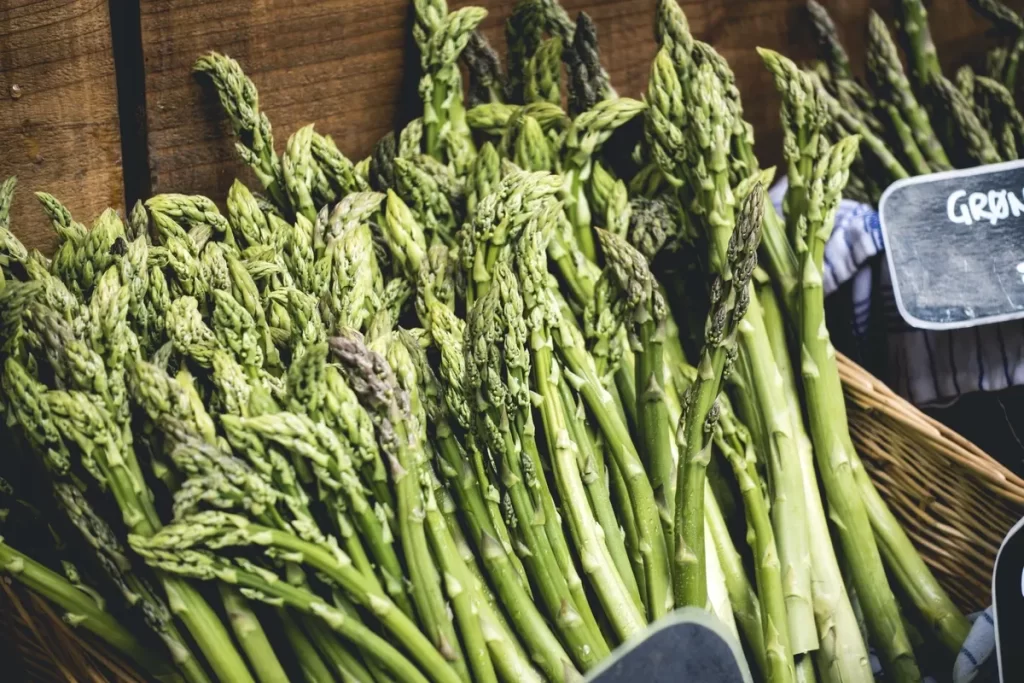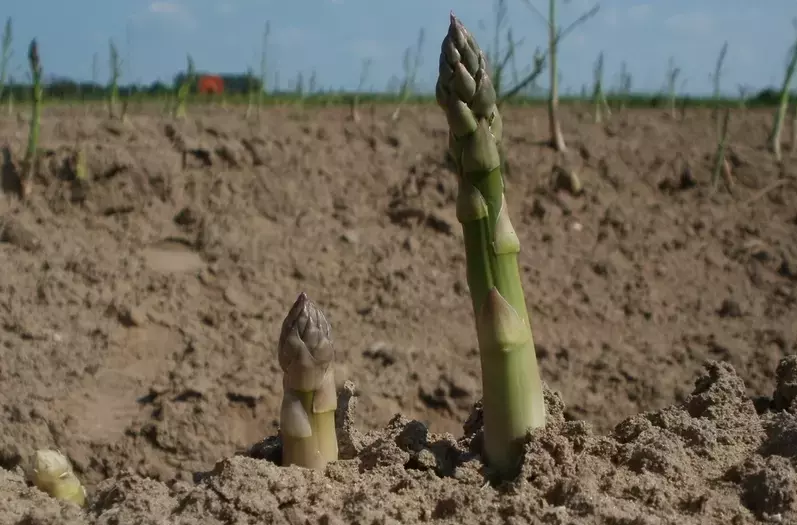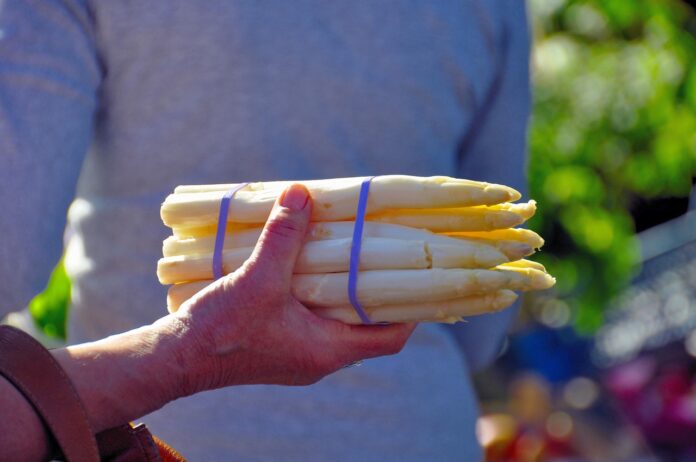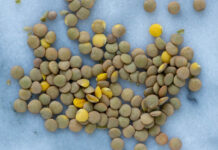In the event that you’re hoping to add asparagus to your nursery, you really want to know the various phases of developing asparagus. Asparagus is a perpetual vegetable, meaning it can live for a long time. It requires a couple of years for asparagus to develop and deliver lances, however, it merits the pause! The three main stages of growing asparagus are: the main stage is a vegetative stage, the second stage is a blossoming stage and the third stage is a fruiting stage.
Why You Should Grow Asparagus
There are many reasons why you should think about growing asparagus in your nursery:
- Asparagus is Nutritious
Asparagus is a decent wellspring of nutrients A, C, and E, as well as folate and potassium. It likewise contains fiber, protein, and antioxidants.
- Asparagus is Low in Calories
One cup of asparagus just holds back 27 calories. This makes it an extraordinary vegetable to remember for a weight reduction diet.
- Asparagus is Really great for Your Digestion
Asparagus is a good source of fiber, which is significant for a sound digestion-related system. Fiber assists with keeping you normal and can likewise assist with diminishing constipation.
- Asparagus May Help to Lower Blood Pressure
Asparagus contains potassium, which is a mineral that assists with regulating blood pressure. Potassium helps to keep your blood pressure from getting too high.
- Asparagus May Boost Your Immune System
Asparagus is a decent source of vitamins A and C, the two of which are significant for a strong immune system. Vitamin C helps to fight off infections, while vitamin A helps to protect your cells from damage
- Asparagus May Help to Protect Your Bones
Asparagus is a good source of vitamin K, which is significant for bone well-being. Vitamin K helps with keeping your bones solid and sound.
- Asparagus May Help Prevent Cancer
Asparagus contains antioxidants, which can assist with shielding your cells from harm. Antioxidants may help to reduce your risk of some types of cancer.
The fact that offers many advantages makes asparagus a good choice. In the event that you are searching for a nutritious vegetable to add to your eating routine, asparagus is an extraordinary decision.
Best Asparagus Varieties

There are many types of asparagus, but some of the best varieties include:
1. ‘Aurora’ – This variety is tall, slender asparagus with bright green spears that are very tender and sweet.
2. ‘Encore’ – This variety is shorter, thicker asparagus with dark green spears that are also very tender and sweet.
3. ‘King George’s Crown’ – This variety has long, thin spears that are light green in color and have a slightly bitter taste.
4. ‘Fuji’ – This variety has thick, woody spears that are dark green in color and have a slightly smoky taste.
Different Stages of Growing Asparagus

1. Seedlings – The beginning of your asparagus journey
Asparagus is a long-term investment, but it’s worth it for the delicious payoff. Your asparagus plants will need to be started from seedlings, which you can purchase from a nursery or online retailer.
Seed germination- The first step in the stages of growing asparagus is to start the seeds indoors about 6-8 weeks before the last frost date in your area.
2. Planting – Time to get your hands dirty
Once you have your seedlings, it’s time to plant them in your garden. Be sure to space your plants about 18 inches apart so they have room to grow.
Planting asparagus- Once the risk of frost has passed, you can transplant your seedlings outdoors. Choose a location that gets full sun and has well-drained soil.
3. Caring for asparagus – Once your asparagus plants are established, they will need little care other than regular watering and fertilizing.
4. Harvesting – The most rewarding part
After two to three years of patiently waiting, it’s finally time to harvest your asparagus. You’ll be able to enjoy fresh asparagus all season long if you judiciously harvest only the largest spears.
Harvesting asparagus- After 3 years of growth, your asparagus plants will be ready to harvest. Each plant will produce about 1 pound of asparagus per year.
The spear stage
The spear stage is the most important and crucial stage of growing asparagus in order to produce a healthy crop. During this phase, you will need to focus on providing your asparagus plants with the right amount of sunlight, water, and nutrients in order to ensure their growth.
One thing that you should keep in mind during this stage is that your plants will be actively growing and developing new spears. This means that they may require more care than usual, so make sure to give them plenty of water and fertilizer while they are undergoing this process.
The fern stage
Among these stages, the fern stage of growing asparagus is a critical time for growers, as this is when the plants reach their maximum height and width. Ferns are also very sensitive to environmental stress, so it’s important to take proper care during this phase if you want your spears to be healthy and productive.
1) Water your plants thoroughly – make sure that the soil is moist but not soggy, and that the roots have plenty of water. Over-watering can lead to root rot or fungal growth, while under-watering
can cause the plants to become stunted and spindly.
2) Fertilize your ferns regularly – use a balanced fertilizer that is high in nitrogen and potassium. These nutrients help the plants to grow and produce healthy spears.
3) Mulch your ferns – using a layer of organic matter such as leaves, straw, or compost will help to keep the soil cool and moist, and help to prevent weeds from growing.
4) Prune your ferns regularly – if they become too tall or too wide, they will not be able to produce healthy spears. can stunt growth and cause leaves to turn yellow or brown.
The dormant stage
The dormant stage of growing asparagus is a process that takes place between the seedling and adult stages. It is when the plant goes into a state of dormancy, in order to conserve energy for future growth.
During this time, the plant will stop producing new leaves and stems, but it will still be alive. This period can last anywhere from six to twelve weeks, depending on the variety of asparagus being grown.
Once dormant has been reached, there are several things that need to happen in order for growth to resume: water needs must be maintained at a consistent level; sunlight exposure must be limited, and roots need access to soil nutrients.
The next process is called germination.
This is when the plant’s dormant state is broken, and the roots start to grow. It can take anywhere from a few days to a few weeks for this to happen, depending on the variety of asparagus being grown. Once the roots have grown sufficiently, the plant will start to produce new leaves and stems. This process can take anywhere from a few weeks to a few months, depending on the variety of asparagus being grown. Once the plant has reached its full growth, it will go into a state of dormancy once again, in order to conserve energy for future growth.
Stage 1: Select a Site
Step 1: Pick The Right Spot
Asparagus is a vegetable that can produce for 25-30 years. So it is best to choose a place where it can have a longer period of life. It’s important to choose a spot that gets plenty of sun (minimum 8 hours of sunlight ) and has well-drained soil. Avoid areas that are prone to flooding or that stay wet for long periods of time as it can affect the quality and size of asparagus. You will need to fertilize the soil with compost or manure before planting it. You’ll also want to make sure the area is large enough to accommodate the Asparagus plants, as they can spread quite a bit.
Another thing you will need to consider is pH level of the soil where you are planning to plant. A pH test can be done to check if the soil is suitable to grow asparagus. It is recommended to have pH value between 6.5 – 7. If you have pH value less than 6 you can use additional helping agents to increase the soil’s pH value. You can test your soil’s pH value every 3-4 years.
Planting
You can either plant crowns or seeds. Asparagus seeds can be planted directly into the ground while crowns are grown in a container until ready for planting. Crowns require less maintenance than seeds. Although when planting through seeds, you don’t have to worry about weeds since you’ll be planting directly into the ground.
Temperature
The optimum soil temperature for asparagus growth is about 50 degrees Fahrenheit. If the temperature is too cold, the plants will not grow properly; if the temperature is too hot, the plants will become scorched and wilted.
Planting asparagus seeds

Plant asparagus seeds 1/4 inches deep and 3 inches apart in rows that are 18 inches wide or wider. Space plants 2 feet apart if growing for commercial production or closer together if growing for your own consumption (3-6 feet apart). Remember to water regularly during germination and early growth!
Once the plants have germinated, thin them to 8-12 plants per row. Water regularly and fertilize with a high-nitrogen fertilizer when needed. Asparagus will reach maturity in about 8-10 months and will produce spears up to 2 feet tall.
Planting asparagus crowns
Asparagus crowns are planted in trenches and grow into stalks. Crowns should be planted in trenches filled with organic material. Planting crowns deep enough allows the plants to withstand drought better. Backfilling around crowns helps keep roots moist and prevents salt buildup.
Stage 2: Asparagus Growth, Care, & Maintenance Stage
To keep your asparagus plants healthy and productive, follow these tips:
1) Mulch your asparagus plants with organic matter to help retain moisture and suppress weeds. It helps keep your asparagus healthy and strong.
2) Fertilize your asparagus plants every two weeks during the growing season with a balanced fertilizer diluted 1/4 strength in water (10-15 ppm nitrogen, 5-10 ppm phosphorus). Do not over-fertilize; too much nitrogen will stunt growth and cause foliage discoloration.
3) You will want to remove all the old leaves before planting new ones. Keep an eye out for pests and diseases early on. Trimming away the dead leaves is necessary to reduce disease and pests.
4) Sidedressing helps stimulate growth and increase yields.
5) Water must be kept around the roots to keep them healthy.
Dividing and replanting:
Asparagus plants can become crowded over time, which can lead to reduced yields. To avoid this, you can divide the plants every few years by carefully separating the roots and replanting them in a new location. This will give the plants more room to grow and produce new shoots.
Common Pests and Diseases that Affect Asparagus
There are several pests and diseases that affect asparagus. The most common of these pests are aphids, which feed on the plant’s sap. Aphids cause leaves to turn yellow or green, and they may produce black sooty mold on the leaves.
Aphids can be controlled by using insecticidal soap, a horticultural oil, or a permethrin-treated product. The asparagus plant can also be protected against aphids by using a barrier cream or a foliar spray. The asparagus plant can also be protected against aphids by using a barrier cream or a foliar spray. It can also be protected against aphids by using a barrier cream or a foliar spray.
Fungal diseases are always present, but you should know how to identify them. Rotting roots are usually caused by fungi. Proper irrigation practices can help prevent fungal infections.
Stage 3: Harvesting Asparagus
Harvesting asparagus is a long process and an important part of growing them successfully.
When harvesting asparagus, it is important to be aware of the different stages the vegetable goes through. The first stage is called “dormancy” and happens when asparagus plants are about two inches tall and have a few green spears. During dormancy, the plant stores energy in its roots so that it can grow taller later on.

The second stage of asparagus growth is called “fruiting” and this occurs when the asparagus spears reach six inches long with tough skin. At this point, the flowers have stopped blooming but new roots are growing which will help support future growth.
The third and final stage of asparagus growth is called “maturity” and this happens when the spears reach twelve inches long and the skin is thin and flexible.
When the asparagus starts producing flowers, you know it’s harvest season. When harvesting asparagus, be sure to leave enough room between the rows. Don’t cut too many spears at once, as this could stunt the plant’s growth.
Does sunflower and asparagus grow well together?
Sunflowers and asparagus are two plants that can grow well together. Sunflowers are a type of annual flower, while asparagus is a perennial plant. Annual flowers bloom for one season and then die, while perennials will continue to grow year after year.
Sunflowers and asparagus both have strong roots that can help each other survive in difficult soil conditions. They also share similar water needs; sunflower seeds need wet soil to germinate, while Asparagus requires good drainage to prevent rot.
Conclusion
Here we discussed the stages of growing asparagus. As we know now that asparagus is a long-term investment, but it’s worth it for the delicious payoff. Start your asparagus plants from seedlings and be sure to space them about 18 inches apart in well-drained soil to get the most out of your plants.
Once your asparagus plants are established, water them regularly and fertilize them every two weeks with a high-nitrogen fertilizer. Harvest your asparagus spears when they are about six inches long and firm.














